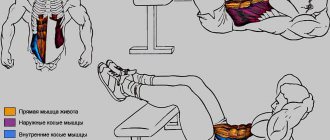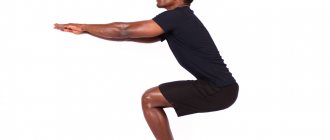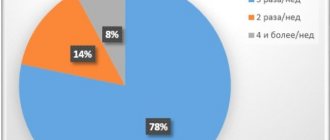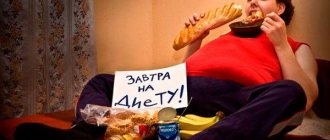To start burning fat in the body, diet and increased lifestyle activity are not enough, especially if you want to achieve your goal in a short time. You need to additionally start fat-burning workouts at home or in the gym. To get the best effect from such activities, girls and boys should follow the recommendations. Fat-burning cardio training is great for solving many issues in the process of losing weight. Fat-burning cardio training itself basically consists of exercises that are performed at high or moderate intensity. HIIT is high-intensity interval training. This is a set of physical activities aimed at burning excess fat mass. Recently, it has become popular among both experienced athletes and those who want to lose weight. Similar classes can be carried out in the gym using special equipment. If you wish, you can organize a HIIT workout yourself at home. And this will be an excellent fat-burning cardio workout.
Let's look at 5 important components:
Nutrition rules - following them, you will lose weight

The less often a person eats, the more the body does to reduce energy loss. In addition to the lack of effect (weight loss), a person experiences weakness and gets tired quickly. The solution to a slow metabolism is to eat fewer calories, but eat more often. We divide the daily calorie requirement into 5-7 meals during the day. In this case, the body will not respond to a decrease in caloric intake, since it will understand that it is not in danger of prolonged fasting.
The following nutritional algorithms will help you.
Contraindications
The disadvantage is the burden on the heart and vascular system. Such exercises are based on the consumption of oxygen in order to contract muscle fibers. These exercises require endurance.
- If you have problems with the respiratory system (asthma or shortness of breath), high blood pressure, it is better to do gymnastics;
- After a heart attack or stroke, cardio is not recommended;
- Sore joints and intervertebral hernia are not the best companions during intense exercise; the situation should not be aggravated. Nordic walking and water aerobics are suitable;
- For varicose veins, gentle exercises are performed: instead of running, fast walking, a regular exercise bike is replaced with a horizontal one. Swimming will do;
- Those suffering from obesity should take the issue seriously. The degree of obesity varies, which means exercise, intensity and duration will vary.
Don't miss the most popular article in the section: Laser hair removal on the face and body - how it is done, effectiveness, before and after photos, contraindications.
Fractional meals
The principle of fractional nutrition is maintaining a balance of proteins, fats, carbohydrates, vitamins and minerals while reducing daily caloric intake. To do this, food is divided into 5-7 meals.
Let's give an example of a nutrition schedule and products that were personally tested in practice and gave a positive result at the rate of 1,500-2,000 kcal per day:
Carbohydrates:
- rice, buckwheat, oatmeal and pearl barley, etc. – 100-250 grams (start the day with the largest portion and eat everything before 15:00, otherwise the body will not have time to spend it).
Proteins:
- boiled chicken breast – 400-500 grams (save for at least one evening meal);
- boiled eggs – 3-5 pieces (also leave 1-2 for the evening);
- low-fat cottage cheese – 200 grams (eat at the last meal);
- low-fat kefir - 1 glass (also at the last meal).
Fiber is vegetables, you can eat them within reason (but at the last meal - only cottage cheese and kefir). Fats – we suggest betting on fish oil capsules (Omega-3). Drink at least 3 liters of regular, still water per day.
After a week of eating like this, weigh yourself. If:
- Nothing happened or you gained weight – no big deal. This means you consumed as many calories as you burned, or more. Reduce your diet by 50-100 grams of carbohydrates.
- We lost 1-1.5 kilograms - great, the fat is disappearing.
- Losing 2 or more kilograms of weight is very bad, not only fat is lost, but also muscle. Add 50-100 grams of carbohydrates to your diet.
Weigh yourself weekly and monitor your diet so that you do not lose more than 1.5 kilograms during the week. Next, if you want, diversify your diet by calculating calories using any calorie tables.
How to calculate heart rate individually?
The most common method is based on resting heart rate data. Its value is influenced by the individual’s physical fitness and age.
Using the example of a 36-year-old man, the boundary of the target zone is calculated. Pulse at rest - 62 beats/min. Calculate how many beats from the maximum frequency the values of 50 and 80% correspond to.
- First, they find out the approximate number of the highest heart beat frequency. Age is subtracted from 220.
220-36=184
- The resting heart rate should be subtracted from the result obtained.
184-62=122
- The original result is 122, multiply by 50% and add your resting heart rate.
122*50%=61
61+62=123
The resulting number corresponds to the bottom point of the target zone. If a person’s heart beats less than 123 beats/min after exercise, the load was insufficient.
- Next, the upper limit of the target zone is determined. The value obtained in the second example is multiplied by 85%. The resting heart rate is added to the result.
122*85%=103.7 almost 104
104+62=166
If the heart beats after exercise exceed 166 beats/min, then the load was high. Using this example, they calculate how to conduct classes without going beyond 60 - 80% of the personal limit.
Cyclical no-carbohydrate diet

The essence of the diet is eating in cycles. We exclude carbohydrates from the diet for 2-5 days, and then eat only carbohydrates for 1-2 days (so that the body does not switch to a slow metabolism).
Be sure to weigh yourself every day and record your results to determine when the weight will stop coming off. This is important: most often the metabolism slows down for 3-4 days, but this is not true for every organism.
We suggest starting with the system: 3 days - no carbohydrates, 1 day - only carbohydrates. Next, if you feel good and the weight is coming off, increase the number of days without carbohydrates. If you feel bad, reduce the number of days without carbohydrates and increase the number of carbohydrate days.
Days without carbohydrates:
- boiled chicken breast or fish – 500-600 grams;
- boiled eggs - 10 pieces;
- low-fat cottage cheese – 300 grams;
- vegetables – 400-500 grams.
Carbohydrate days:
- rice, buckwheat, oatmeal and pearl barley, etc. – 100-250 grams;
- Protein and fiber – within reasonable limits (i.e. don’t overeat).
This diet is considered the most effective, but is not suitable for everyone. If you do not have time to restore strength during carbohydrate days, you feel lethargic and powerless, add chocolate or honey to your cereal. If this doesn't help, this diet is not for you.
Home workouts by Jillian Michaels to burn fat
Quite a famous and ruthless trainer. After her classes, I barely have the strength to crawl to the shower. But the result is worth it. Jillian Michaels has many programs that focus on different muscles and levels of fitness.
Basically, programs are designed for a certain period of time. One of them is called “Slim figure in 30 days.” 2 kg dumbbells are a must. It is a help to improve your beautiful body sculpture.
Classes are performed 4 – 5 times a week. The pace is intense. The whole body is involved, as the exercises are difficult. For example, arm raises with dumbbells are performed together with lunges. Starting position – plank. You should lower yourself onto one arm, bending it, also onto the second, then rise. Change hands.
Such activities provide cardio exercise and are useful for those who want to lose excess weight. All programs and exercises are worthy of special attention. It’s better to see it once and choose the program that you like.
If you don’t have money for proper nutrition and diets
The above diets cannot be classified as budget ones. Another option is to distribute your own standard daily meals into 6-7 meals a day. A week after weighing, determine the results.
If you gain weight or remain at the same level, reduce carbohydrates by calculating your nutrition using any calorie table. If you have lost more than 1.5 kg, add carbohydrates or, for example, eat a chocolate bar a day. If you have lost 1-1.5 kg, everything is great.
Cardio training for weight loss at home and outdoors

Cardio training - walking, jogging, swimming, cycling, exercise on an exercise bike, jumping rope, etc. There are two sources of energy in the muscles:
- Glycogen is the carbohydrates that are burned first. It lasts on average 40 minutes.
- Fat is not subcutaneous, but muscle fat. It is spent either when glycogen is released, or when slow muscle fibers are involved. It also lasts for 40 minutes on average.
During such cardio exercises the following happens:
- fat “burns” (first glycogen, then fats from the muscles, and when they come out, subcutaneous fat is “wasted”);
- blood circulation increases;
- the cardiovascular system is strengthened.
The overall endurance of the body also increases.
Cardio training outdoors
Cardio workouts are divided into high-intensity (very fast running, fast cycling) and low-intensity (fast walking). The more intense the load, the more carbohydrates are burned and the less fat is burned. With low intensity (when slow muscle fibers are involved), on the contrary, fat immediately “burns”.
Does this mean that brisk walking is more effective than running in burning fat? On the one hand, yes. But on the other hand, the more intense the load, the more energy (calories) will be spent during recovery. That's why:
- High-intensity cardio training will help you quickly “burn” fat, but with additional stress.
- low-intensity cardio workouts will also help “burn” fat, but more slowly.
Therefore, if time is not critical, or if you do strength training, you can avoid exposing yourself to additional stress and preserve muscle (more on this below).
Cardio training at home
We perform cardio training at home with an open window and in a well-ventilated room (so that the body is saturated with oxygen, and oxygen oxidizes fat in the body). The following exercises are suitable:
- riding an exercise bike;
- jumping rope;
- rotation of the hoop;
- slow running in place;
- gymnastics.
You need to do cardio training at home for at least 40-50 minutes without a break, in a ventilated area, while monitoring your pulse (more on this below).
Cardio for gaining muscle mass
One of the most common mistakes many beginner athletes make when trying to develop muscle mass is overdoing their cardio workouts. This really allows you to burn fat and show muscle definition. However, there is also a negative side to such exercises. The fact is that such a training format with excessive loads also leads to the destruction of muscle fibers, which negatively affects weight gain.
Cardio training should not be completely excluded from the training program, however, it is worth minimizing its number and not overloading the body with excessive fat-burning programs. The duration of your cardio workout should be based on many different factors. First of all, it is worth taking into account the individual metabolic level of a person. So, for those who have an ectomorphic physique, any cardio exercise is a means of destroying precious calories, so the duration of training should be minimal.
How to combine cardio and strength training for weight loss - options for beginners and amateurs

We suggest considering two options for combining cardio + strength. Option number 1 – for those who have time to train:
- Step 1 – 40-50 minutes of low-intensity cardio training (muscle fat goes away).
- Step 2 – 20-50 minutes of strength training to trigger lipolysis with the help of stress and anabolic hormones.
- Step 3 – 1 hour of rest (to allow blood flow to deliver fat to muscles).
- Step 4 – repeat steps 1 and 2.
Option number 2 – for people who don’t have time:
- Step 1 – 40-50 minutes of low-intensity cardio in the morning. For example, walking at a brisk pace on an empty stomach (muscle fat goes away + in the morning there is not so much “own” fat in the muscles).
- Step 2 – 40-50 minutes of low-intensity cardio training before strength training (muscle fat goes away).
- Step 3 – 20-50 minutes of strength training to trigger lipolysis with the help of stress and anabolic hormones.
- Step 4 – 40-50 minutes of low-intensity cardio after strength training (for example, a brisk walk home).
You can add low-intensity cardio training whenever possible.
How and why to monitor your pulse

You need to control that the pulse level within 110-160 beats per minute (true for young, healthy people, deadly for the elderly) will allow the body to be saturated with oxygen, which will oxidize fats. If the pulse drops to 60-90 beats per minute, the body will begin to “burn” not fat, but glycogen.
The maximum permissible heart rate level for your body can be calculated using the formula 205.8 - (0.685 x the number of years lived) = round the result down to whole numbers. Thus, for a 30-year-old man, the maximum allowable heart rate is 185 beats per minute, so a range of 110-160 is acceptable.
We are waiting for you in the comments. We will try to answer questions and help.
The Naked Facts About Cardio Training
Aerobic training (steady state cardio)
Let's find out how many calories we burn with one of the most effective and popular workouts - running. According to a Harvard University study, a person weighing about 84 kg running at a speed of about 13 km per hour can burn 555 calories in 30 minutes.
Does this seem like a lot? Yes and no. That's more calories than you'll likely burn in the same amount of time lifting weights (266 calories), but you'll have to eat something at some point during the day. And this is a problem because it is much easier to consume calories than to burn them.

Let's say this 84-pound runner combines his workouts with a healthy, protein-rich meal that consists of 8 ounces of skinless chicken breast, one cup of brown rice, and as much broccoli as he can fit on his plate, seasoned with one tablespoon of olive oil. That's just under 600 calories.
In other words, just eating HEALTHY (most people don't eat that healthy) will largely cancel out the calories you burn in one intense aerobic workout session. Plus, you'll have to eat more than once a day, but you won't be going back to the gym over and over again, so eating even the cleanest foods can negate your calorie-burning efforts.
HIIT (interval training)
According to the American College of Sports Medicine (ACSM), alternating hard workouts with periods of light work or rest (which you probably know as high-intensity interval training, or HIIT) can burn more calories per minute than aerobic workouts.
This makes HIIT more time efficient, but because interval sessions are more intense than aerobic sessions, they may not last as long, meaning you won't burn more calories overall.
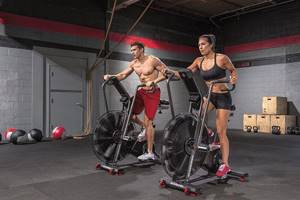
A study published in the American Journal of Human Biology compared stationary training to HIIT. The subjects alternated sessions in which they ran for 20 minutes without a break, keeping their heart rate at a moderate level, with workouts in which they did repeated 20-meter sprints.
After seven weeks, the total exercise time on the runs was naturally much longer, and so roughly 4,410 calories were burned in the stationary workout versus just 907 in the HIIT workout.
Moderate intensity interval training
According to Don Saladino, a New York-based trainer for celebrities such as Ryan Reynolds and Blake Lively, each of the three days allocated for cardio should be done with a different type of cardio, and there are three in total. “You have your stationary training, your HIIT and then moderate-intensity cardio,” says Saladino. This last category is what most people think of as HIIT, but it's actually not. It's a cross between true HIIT and aerobic work.
Moderate intensity interval training is everything between brisk jogging and walking. This could be jumping rope, battle rope waves, a circuit of weight-bearing exercises, or anything else that gets your heart rate up and allows you to give your heart a little boost as well as a little recovery before moving on.

This is different from HIIT, which is so intense that it can only be sustained for four to six seconds. We're talking full sprints, combat kicks, or Airdyne bike work. Since it has a big impact on both the nervous system and the muscles, you should limit your HIIT sessions to two workouts per week.
Finally, there's steady-state cardio, where all you have to do is set your heart rate between 120 and 150 beats per minute and hold it there for 30 to 60 minutes. You can do this workout almost every day if you want, but one day a week combined with HIIT and moderate-intensity interval training is enough.
Each type of cardio trains a different energy system, so it's important to develop each to get fit, but none can replace strength training and diet when it comes to getting your abs ready for the beach.
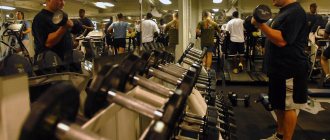
![Cardio training for burning fat at home [video selection]](https://activel.ru/wp-content/uploads/kardio-trening-dlya-szhiganiya-zhira-doma-video-podborka-330x140.jpg)


